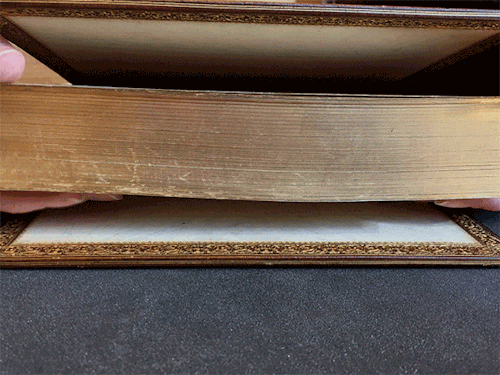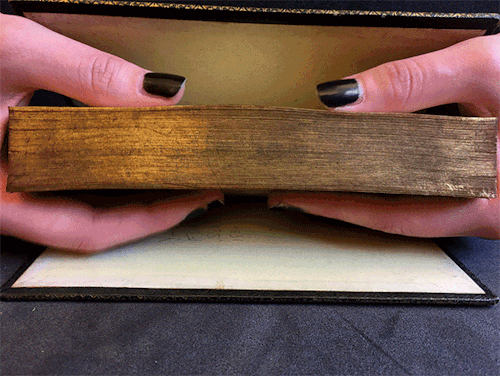nyhistory:Hidden, or disappearing, fore-edge painting is a technique that dates back to the mid 17
nyhistory: Hidden, or disappearing, fore-edge painting is a technique that dates back to the mid 17th century, when London bookbinders began decorating not the flat edge of a text block, but rather the gently fanned edge. Doing so caused the image to appear and vanish depending on how the pages were held. In some cases, as with the views of Boston and Philadelphia above, two different scenes were painted on either side of the fore-edge, so that only the gilt edge is visible until the pages are fanned in one direction or the other. There’s more about these fore-edge paintings on the From the Stacks blog! Fore-edge painting of York Cathedral. Thomas and Katharine Macquoid. About Yorkshire. 1894. New-York Historical Society. Double fore-edge painting of oval views of Hull and Olney, with decorative surrounds. John Scott. The Life of the Rev. Thomas Scott, Rector of Aston Sandford, Bucks. 1836. New-York Historical Society. Double-fore edge paintings of Boston and Philadelphia. Washington Irving. The Sketch Book of Geoffrey Crayon, Gent. 1864. New-York Historical Society. Fore-edge painting of Eton from Windsor Castle. Thomas Gray. Poems and Letters. 1867. New-York Historical Society. -- source link
Tumblr Blog : nyhistory.tumblr.com




